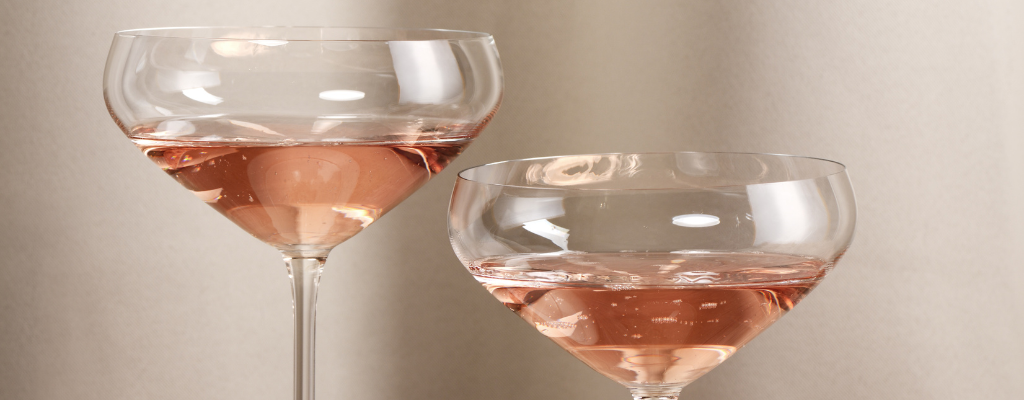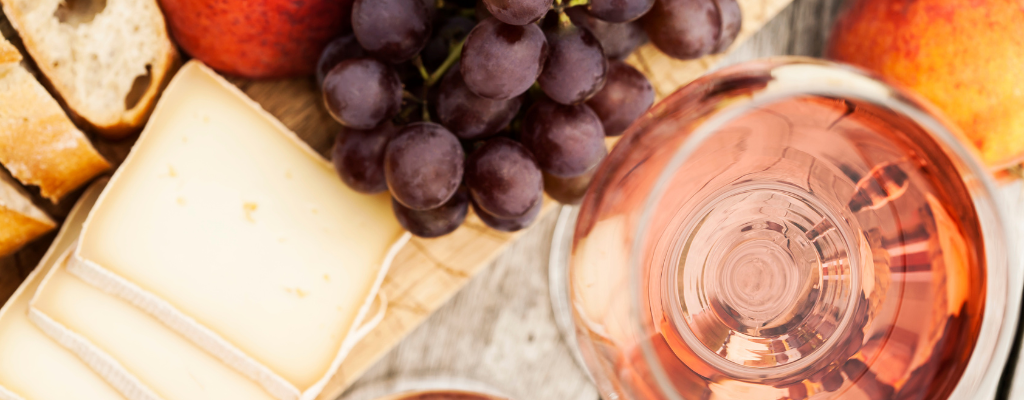Published on June 7, 2023.
No Way, Rosé!
As the weather warms up and the sun starts to finally appear, more people will start opting for a chilled rosé wine as their go-to choice. Rosé is fresh, light and vibrant; however, it is not always easy to know how to choose a good rosé wine. Here are some tips to keep in mind when making a choice for your drinks menu.
Colour
The easiest thing to do when judging whether a rosé is perfect for your venue is to look at the colour as it can tell you a lot about the flavour and aroma. There are a range of colours rosé wine can be and it can vary from lighter to darker, from pale pink to reddish or purplish. It is determined by the maceration time of the grape skins when creating the wine and the type of grape used. When a wine is paler and more transparent in colour, it is a good indication that it will have fruity and citrus notes, while being a drier wine. Tempranillo and Garnacha grape tend to be lighter in colour. The darker shades of an intense rosé usually denote strawberries and red fruits and indicates a bolder flavour on the palate which will lean towards sweetness. Darker wines are usually made from Syrah and Bobal grapes that give a more powerful colour.
Alcohol Volume
Alcohol volume, or ABV, is one of the easiest ways to tell how sweet or dry your rosé will be. The general rule is that anything higher than 11% will be dry, you go lower and you will get a sweeter wine.
Vintage
It is not true that every wine improves with time. On the contrary, this is something that depends on each wine. There are wines that have a long ageing projection, while others are designed to be consumed in a relatively short time. In the case of rosé wines, unless it is an aged rosé wine, which is a gastronomic rarity, the general rule is “the sooner, the better”. This means that it is recommended to consume them within two years of their harvest. This is because rosé grapes are selected for their freshness, harvested early and fermented at low temperatures, resulting in a tasty and fresh end product. Often, as they age, their flavour tends to flatten out.
Origin
Although the origin of the wine does not have to be an exclusive indicator, it can sometimes serve as a guide to know where to start. If you have to try a rosé wine for the first time or you are a bit lost, there are some trusted regions to fall back on. Stick to Provence (Italy), California, Bordeaux (France) or the north of Spain. However, if you have a preferred region for red wine, it is always a good idea to try a rosé from that region also.
Share this article
About the author

Chloe Lewis
Chloe looks after all copywriting and proof-reading for Drink Warehouse UK, working with the Marketing team to deliver educational content to all our customers. She has spent many years in the hospitality sector, moving from behind the bar to now helping venues to stock their own. You can find more from Chloe about beer, cider, spirits, wine, non-alcoholic, soft drinks and RTDs all over our blogs, website, social media and Set The Bar magazine.
Click here to receive the latest and greatest promotions, new products, competitions and so much more straight to your inbox.










